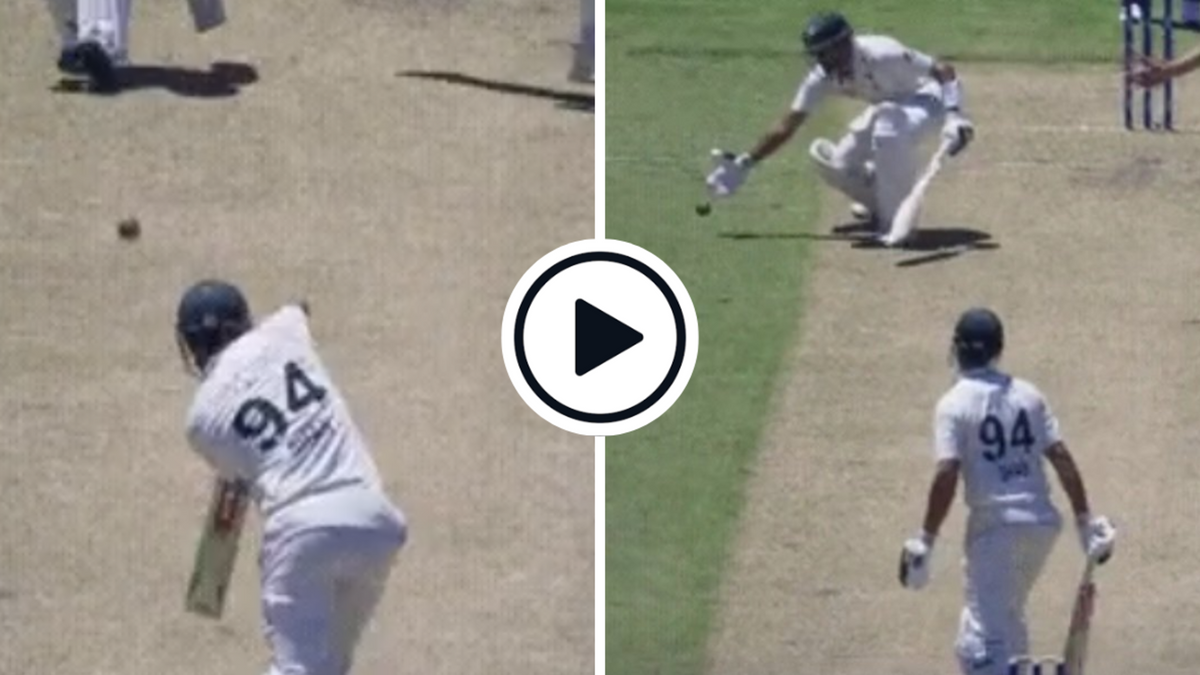
Watch: During a warm-up match against the Australian Prime Minister’s XI, Babar Azam nearly found himself in danger of being given out obstructing the field.
Subscribe to the Wisden Cricket YouTube channel for post-match analysis, player interviews, and much more.
Opting to bat at the Manuka Oval in Canberra, Pakistan lost Imam-ul-Haq in the eighth over before Abdullah Shafique (38) and new captain Shan Masood (156 not out) added 58 for the second wicket. Babar Azam (40) then helped Masood add another 92.
The incident took place in the 37th over. At that point, Pakistan were 113-2 with Masood on 58 and Babar on 10.
As Masood pushed Beau Webster towards mid-off, the ball rolled along the ground past Babar’s left. For whatever reason, Babar stooped, then stretched out his right glove towards the ball but missed it.
Had Babar actually gloved the ball, he might have been ruled out obstructing the field. Law 37.1.1 states: “Either batter is out Obstructing the field if … while the ball is in play, he/she wilfully attempts to obstruct or distract the fielding side by word or action.”
It also makes clear: “Either batter is out Obstructing the field if, at any time while the ball is in play and, without the consent of a fielder, he/she uses the bat or any part of his/her person to return the ball to any fielder.”
When Pakistan toured Australia in 1978/79, Sarfraz Nawaz had appealed for handled the ball against non-striker Andrew Hilditch and got the decision in his favour.
That mode of dismissal has been brought under the umbrella of obstructing the field, and only the striker can be ruled out in that manner.
A few hours after this incident, against New Zealand at Mirpur, Bangladesh’s Mushfiqur Rahim tried to glove a ball from Kyle Jamieson and became the second batter in the history of Test cricket, after Len Hutton, to be ruled out obstructing the field.
Pakistan were 324-6 at stumps on day one of the match.
Watch Babar Azam nearly handle a ball during Pakistan’s warm-up match:
Babar Azam keeping himself in the game at the non-striker's end…. #PMXIvPAK pic.twitter.com/bMZk2Nk7pi
— cricket.com.au (@cricketcomau) December 6, 2023








